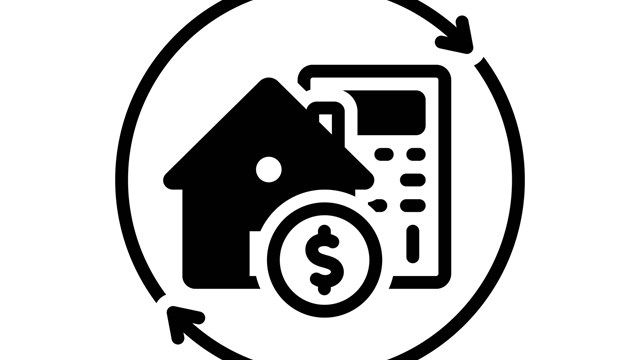Co-op and condo owners whose boards are in favor of adding a rooftop deck, exercise room or play area should think twice before shooting down the idea for fear it will be too expensive. Imagine the time you'd gain in your busy schedule if you could do your daily workout right downstairseven better, if you could drop your child at an indoor play area right next to the exercise room. In many co-ops and condos the rooftop is underutilized. Wouldn't it be a luxury to be able to go upstairs to a rooftop deck or garden to catch a few rays and enjoy some outdoor time?
High end buildings aren't the only ones with the means to turn a dreamed-about amenity into reality. Some buildings are fortunate enough to have a substantial reserve fund. The monies can be obtained from this source, says Suz Landi, senior account executive at Charles H. Greenthal Management Corp. in Manhattan. But buildings that are not as wealthy can raise maintenance or carrying charges, either temporarily or permanently. Or a special assessmentan additional charge for a limited period of timecan be levied until the necessary money has been collected. Later, a fee for usage of the amenity can help recoup some of the money spent.
Obtaining Support
Obtaining support of the proposed project by building residents can be more difficult than finding the money to pay for it or the space in which to install it. Not all residents always agree with every decision to add an amenity to their building. An individual who has no children, for example, might not see the value of a play area. Similarly, someone who spends every weekend at a country cottage might not be in favor of creating a rooftop deck. According to a source at Gumley-Haft, a residential management firm in Manhattan, the board of directors can seek the participation of the entire building by sending a letter to all residents. If a large majority are in favor, the project can proceed. Or, the board can have a preliminary meeting to discuss the matter, and then assign an individual or committee to seek proposals. After a question and answer session, the matter can be presented for a vote at the annual meeting.
One resident at an Upper West Side co-op says that about three years ago a portion of the laundry room was walled off to install a gym. She was told that in 15 to 20 years the investment would pay off, but feels that's a lot of time to wait. She can't help but notice that thousands of dollars of the building's money are being spent on carpeting, mirrors, air conditioning and what looks like some very expensive exercise equipment. She questions whether the expenditure is warranted since, as far as she can tell, shareholders from only 25 to 30 of the 100 units use the gym.
Amenities Enhance Salability
According to Barbara Fox, president of Fox Residential Group, a real estate brokerage firm in Manhattan, adding amenities to a co-op or condo building can enhance the salability of the units, and this happens instantaneously. While the value of the added enhancements can't be measured by a percentage or dollar amount, Fox says that just knowing a co-op or condo is thinking about installing a gym can sometimes move buyers toward selecting that building. Of the various amenities that can be added, a fitness center adds the most value by far, says Fox. It's a real plus, because most people don't have the space in their apartments to house all that exercise equipment.
Designers Barbara Sloan and Marjorie Hilton, who have worked on a number of co-op and condo common areas in the city during the past 25 years, have seen an increased interest in on-premises exercise facilities. So many of our clients were thinking about putting in a gym, says Sloan, that we started a new company called Urban Gym Design. Based in Manhattan, Urban Gym Design provides a wide array of services to co-op and condo buildings.
We provide a questionnaire for residents regarding their exercise habits, Sloan explains. We help them evaluate the space they have, then we design the area and help them get equipment. We also interview, select and supervise the contractors throughout the project. After the exercise equipment is installed, we arrange for professional trainers to run instructive seminars on how to use it.
Sloan adds that while residents may be enthusiastic, they first need to find a place to put the gym. We can transform a space in the basement like a piece of the laundry room or boiler room or an underutilized storage area, she suggests. It's not expensive; the cost is approximately $50 per square foot to set up a basic gym.
Marvin Friedman, general manager of Better Health Fitness and Recreation in Brooklyn, which designs and installs custom gyms, recreation and playground areas, points out that high tech clientele will require the best equipment in their health clubs. You could spend up to $50,000 on a treadmill, ski master, step machine and stationary bicycles. The building must decide what budget to allocate for equipment. You can't purchase an $8,000 piece of equipment if the budget is only $3,000.
The Child Factor
Increasingly, the people using on-site exercise rooms in co-ops and condos are parents. There's a lot more emphasis on the family today than there was ten or 12 years ago, says Steven Kass, CEO of American Leisure Corporation in New City, New York, a lifestyle and fitness design and management company. Kass reports seeing a new trend in which children's needs are taken into consideration when planning exercise spaces. There's a greater demand for installation of safe flooring where adults can schedule children's group activities like gymnastics, he adds.
Kass has also found that, as the baby boomers age and look for lower impact exercises, companies are developing innovative equipment like underwater treadmills and stairclimbers that can fit in a 12-by-15-foot pool area. When making the decision to put in a pool, structural requirements need to be examined. According to Kass, pools are typically installed in the basement or over a garage. Even if space is limited, there's almost always room for a swim machine. When installed in a 12-by 6-foot swimming pool, this popular device creates a current for swimming in place.
The revamped pool area and adjacent exercise room at 50 Lexington Avenue, a 187-unit luxury co-op building in Manhattan, is so appealing that residents wouldn't dream of cheating on their exercise regime. We worked with the board and a committee created for the project. They trusted us to do a nice design. The managing agent also joined in at the meetings, explains Victor Dadras, a partner at TKV Architects in Manhattan which performed a major renovation of the building including an upgrade of the health club and pool room.
A Rooftop Deck or Playground
The rooftop can be an ideal spot for a children's playground, a rooftop deck or both. The age of the building is not a factor as long as the roof passes muster. It must be fairly level and not leaky. According to Friedman, the basement is great for a pared down play area including rubberized flooring and low climbing equipment. But the rooftop lends itself better to a full-service playground because it can house a sandbox as well as the typical spiral slide which is about six feet high. Eight- to ten-foot fencing makes the area safe for children.
Adults also enjoy going up to the roof. People want more space than just what's available in their apartments, explains Al Seabra, operations director at The Sitecraft Division of The Rosenwach Group in Long Island City. They want to be able to get outside without having to go far from the building. And they like the fact that the rooftop deck is a secure location. Seabra adds that the first step for a building that wants to convert the rooftop is deciding how the space will be used. Some co-ops and condos rent the space out for parties. Others use it strictly for sunbathing, he explains. The city code must be checked to see how much room for roof construction of this type is allowed by the city. The next step is to decide on what decking system will be used.
One popular system is the two-inch by two-inch wood deck tiles offered by Designer Deck of New York (DDNY) in Lincolndale, New York. According to DDNY president Renata Tobel, her natural-looking product is ideally suited for roof deck flooring, in addition to balconies and terraces. Unlike concrete, which is much heavier, these wood tiles apply no specific pressure points to puncture the protective waterproof membrane that's placed over roofs. And, unlike outdoor carpets, this patented product allows water to flow through the grating and keeps the roof surface below dry so that expensive repairs are avoided. The price is $5.50 per square foot plus installation.
Finishing Touches
Once the deck has been installed, companies like Poly-Fol Corporation, an interior and exterior landscaping company in Mamaroneck, New York can help transform it into a garden in the sky. According to Stanley Bernstein, president of Poly-Fol, you can have a wide variety of plants, shrubs and even small trees that live in pots and planters of all sizes. We often use annuals that can withstand the winter. In the fall we put in daffodils and tulips that will bloom in the spring. We recommend evergreens and other shrubbery that stays green all year round. And, of course, low foliage that can't be blown away. Kass is finding more of a demand for flowers than ever before for a greater taste of outdoors. We've also been doing some Japanese inspired gardens using rocky terrain and miniature fruit trees.
If you select living things that require low maintenance, and that are rugged enough to withstand smog and other harsh city elements, your rooftop garden will be the envy of the neighborhood. And, like an on-site gym or children's play area, this popular amenity can increase the salability of your real estate investment.







2 Comments
Leave a Comment